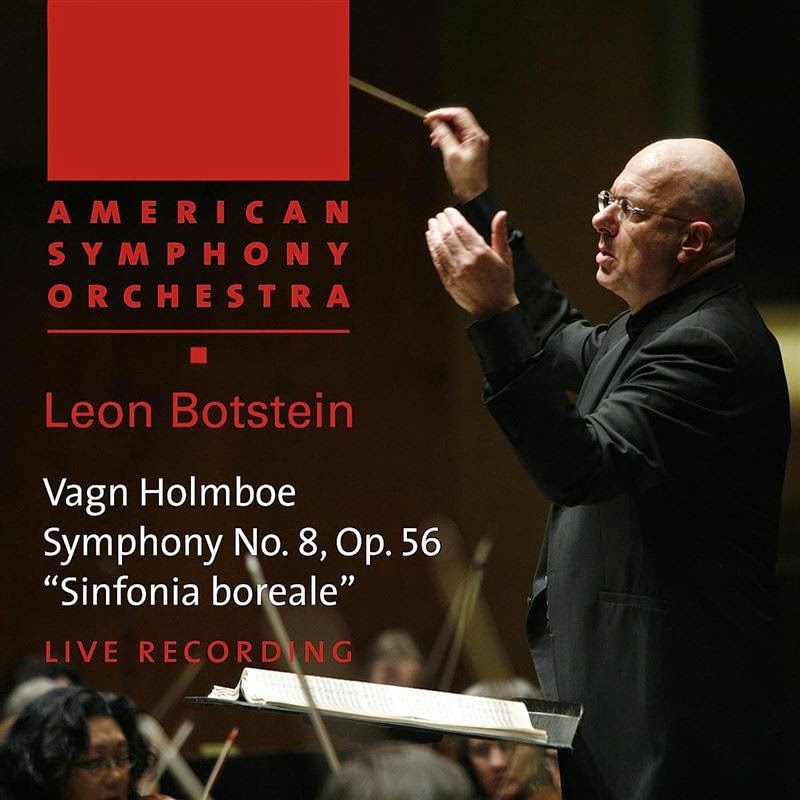Hello, and welcome to a Vagn Holmboe discography.
I suppose the first thing to address here is: who is Vagn Holmboe? Although if you've found this blog you might already know the answer to that question. Nevertheless, it's worth briefly providing an answer.
Vagn Holmboe (1909-1996) was a Danish classical composer, certainly held in high regard in local circles but still not all that widely known outside Scandinavia. His career was lengthy, with his earliest known compositions written in 1926. The composition he assigned as "opus 1" was a suite for orchestra written in 1935, and he continued to produce works at a steady rate for the next 60 years. He was still working on new compositions at his death.
The style of his music is often called 'neoclassical', as he continued to use traditional musical forms like symphonies in a period where many composers did not, and he did not follow some more avant garde trends. However, his musical language is definitely of the 20th century. It also, particularly in the earlier part of his career, has elements taken from folk music, both from Denmark and from Romania, the homeland of his wife, Meta May Holmboe (nee Graf). She was a pianist and also became a photographer - her images have been used on the covers of recordings of her husband's compositions.
Comparisons are often made between Holmboe and more well-known composers. My own preferred comparison is with Sibelius, as I think that they share a similar approach to developing musical material, allowing it to evolve in a gradual and organic fashion. It's also common to see comparisons to Bartók (partly from the folk element) and sometimes Hindemith. Another perhaps more surprising comparison is with Haydn, who was one of Holmboe's own favourite composers.
It will come as no surprise to say that I love Holmboe's music.
But why a discography? Partly it's a result of my somewhat obsessive nature. When I find a topic I'm interested in, I tend to want to investigate as far as possible. Partly it was because of frustration on my part at the difficult of finding the information I wanted, at least all in a convenient location. I've been aware of some resources for discovering news about Holmboe recordings, but every now and then I would stumble across something I hadn't heard of and then wonder what else I was missing.
But it's also in large part because it seemed
doable.
This is both good and bad. The bad aspect is that there really aren't
that many recordings of Holmboe's music, certainly not when you compare it to the seemingly endless stream of recordings of the most popular works of great composers like Mozart, Beethoven or Mahler. While there certainly are works of Holmboe's for which multiple recordings exist, there are also many for which there is only one readily available recording, or only one that I'm aware of despite extensive research into fairly obscure corners, or no known recording at all.
The good aspect is that a complete discography is both a manageable task and useful. It's possible to let people know what exists and for this to be meaningful information. The lack of competition also means that it's not really necessary to enter into discussion of which recording is the best one to have. In many cases, the best recording to have of a work is whichever one you can successfully get your hands on.
The form of this discography is likely to develop over time. A blog is perhaps not ideal, but I don't currently have enough knowledge to build a self-contained website. My initial plan is to take a thematic approach, dealing with groups of works such as orchestral, chamber or choral music, as this is the way the music most often appears on recordings. Over time I hope to develop other useful catalogues such as by chronology/opus number and by the composition's title, but meanwhile the Blogger search tool might also prove useful.
I hope that this project does prove useful to people. I also hope that if people find information that appears to be incomplete or inaccurate in some way, they will get in touch and contribute to making a better discography.











